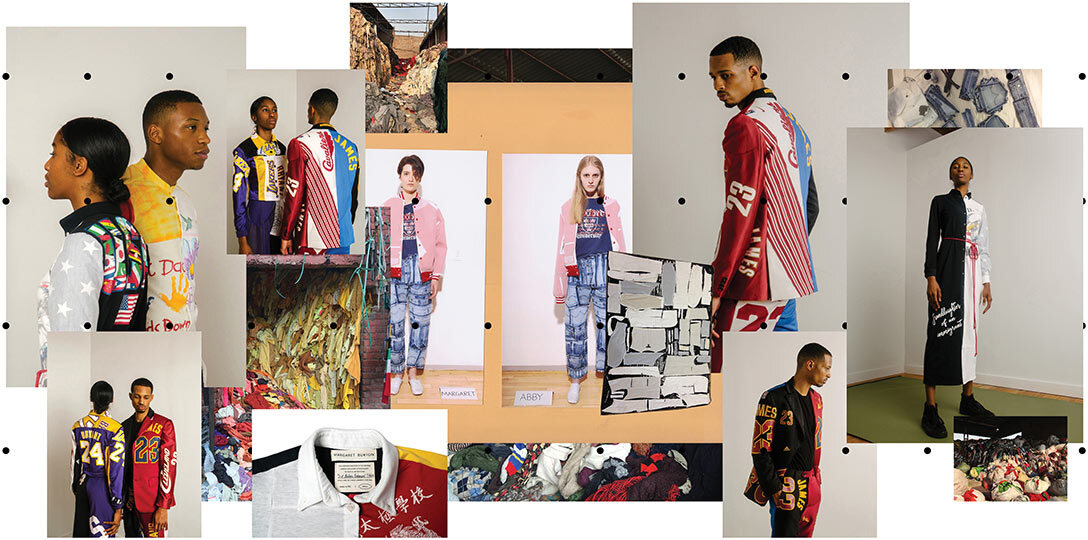The call to action
While Burton was a student at Pratt, an internship at a high-end womenswear brand opened her eyes to a distressing aspect of the lifecycle of clothing. “They had a room full of samples and canceled styles,” she says. “On occasion, they would ask me to cut all the clothes in half so they could throw them away. I was so confused at the time and shocked.” Burton set out to investigate fashion’s material footprint, eventually traveling to India to experience the shoddy industry, which manufactures fibers from discarded garments — the refuse of high-turnover “fast fashion.” (Research photos Burton made of shoddy manufacturers’ raw materials—massive collections of cast-off garments—appear in the image above.)
The goal
During her senior year at Pratt, Burton resolved to make her thesis collection 100 percent recycled. From that seminal collection, centered on deconstructed blue jeans, cotton jerseys, and other sportswear pieces juxtaposed with silks and sheers, all donated or thrifted, Burton’s mission for her practice was clear. She would create reclaimed garments with a level of intentionality that would ask viewers and wearers to stop and consider what it takes to make their clothes and question the pace of consumption.
The process
Burton honors the detail and individual components that define a piece, making sure those elements remain part of a new garment’s story. “My process starts with seam ripping an entire garment. Ironing all the patterns flat and brushing away all the leftover threads”—which reveals the ghosts of stitches and creases, marks of the labor of construction. “I want to respect what the garment was, so I still want the viewer to be able to see recognizable pieces like a pocket.”
The opportunity
Burton’s materials tend to find her, via friends, family, and Instagram followers. By the same route, she recently found another level of meaning in her practice, helping others to manage some of the chaos that follows a loss. “This past year, I had two people on separate occasions approach me about making a garment from clothes left behind by a loved one who had recently passed away. To be able to take memorable clothes from someone’s life and piece them into a garment for their loved ones to wear, share stories with, and be comforted by has put my work in a new realm.”
The message
“I hope my small, time-consuming process of making one-of-a-kind pieces offers one source of sustainability and beauty in the world. I hope it encourages people to invest in clothes that last and also tell stories.”
The vision
Burton already sees progress as “more companies are feeling the pressure to be environmentally conscious and factory conscious” and consumers are building relationships with brands. What does she imagine for the future? “I see more customization happening and more companies investing in recycling techniques. I see us becoming a circular industry.”
